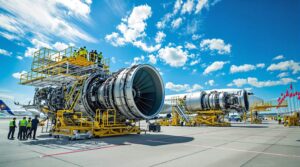Becoming an aircraft pilot is an exhilarating journey that requires dedication, skill, and a passion for aviation. Whether you dream of soaring through the skies as a commercial airline pilot or navigating smaller aircraft for personal enjoyment, the path to becoming a pilot involves specific steps and milestones.
Obtain the Necessary Education
Embarking on a career as an aircraft pilot typically begins with obtaining a high school diploma or its equivalent. While a college degree is not mandatory, many aspiring pilots choose to pursue higher education in aviation, aeronautical engineering, or a related field. Such educational backgrounds can provide a solid foundation for the complexities of flying.
Research and Choose the Right Flight School
Enrolling in a reputable flight school is a crucial step towards becoming a pilot. Research various flight schools, considering factors such as accreditation, instructor qualifications, and the types of aircraft they use for training. Selecting a school that aligns with your goals and preferences is essential for a successful training experience.
Start with Private Pilot Training
Private pilot training is the initial step on the path to becoming a certified pilot. During this phase, you’ll learn fundamental skills such as navigation, aerodynamics, and emergency procedures. Successful completion of private pilot training allows you to fly aircraft for personal use.
Pursue Additional Certifications
Depending on your career aspirations, you may need to pursue additional certifications beyond the private pilot’s license. Commercial pilot training, instrument rating, and multi-engine certification are common steps for those aiming to fly professionally.
Gain Experience and Build Flight Hours
Accumulating flight hours is a crucial aspect of becoming a skilled pilot. Many professional pilot positions require a specific number of flight hours, and gaining experience in various weather conditions and aircraft types enhances your proficiency and marketability as a pilot.
Obtain the Necessary Licenses
After completing the required training and gaining the necessary flight hours, you’ll need to obtain the relevant licenses from the aviation authorities in your country. This often includes passing written exams, practical flight tests, and meeting specific medical requirements.
Network and Explore Job Opportunities
Building a network within the aviation industry is essential for securing job opportunities. Attend aviation events, connect with professionals, and explore various job avenues such as commercial airlines, cargo transport, or private aviation.
Stay Updated and Committed to Continuous Learning
Aviation is an ever-evolving field, and staying updated on the latest technologies, regulations, and safety protocols is crucial. Commit to continuous learning and professional development to ensure a successful and enduring career as an aircraft pilot.
Embarking on the journey to become an aircraft pilot is both challenging and rewarding. Through a combination of education, training, and experience, you can turn your passion for aviation into a fulfilling career. Stay focused, dedicated, and embrace the excitement of the skies as you navigate the path to becoming a certified and accomplished pilot.
9. Embrace Technology in Aviation
Technological advancements play a significant role in modern aviation. Familiarize yourself with the latest cockpit technologies, navigation systems, and aviation software. Embracing technology not only enhances your efficiency as a pilot but also demonstrates your adaptability to the dynamic landscape of the aviation industry.
10. Consider Specialized Training Programs
Explore specialized training programs that cater to specific sectors of aviation. Whether it’s aerial firefighting, medical evacuation, or aerial surveying, acquiring specialized certifications can open doors to unique and fulfilling pilot opportunities. Tailor your training to align with your interests and career goals.
11. Understand International Aviation Regulations
For those aspiring to fly internationally, understanding and navigating the complexities of international aviation regulations is crucial. Stay informed about the differences in airspace rules, flight operations, and safety standards across various countries to ensure seamless and compliant cross-border flights.
Frequently Asked Questions
Here are some common questions aspiring pilots often have:
| Question | Answer |
|---|---|
| 1. What age is suitable to start pilot training? | Most countries require individuals to be at least 17 years old to start pilot training for a private pilot’s license. |
| 2. Can I become a pilot without a college degree? | Yes, a college degree is not mandatory, but it can enhance your knowledge and competitiveness in the field. |
| 3. How long does it take to become a commercial pilot? | The time varies, but it typically takes several years to accumulate the required flight hours and certifications for a commercial pilot’s license. |
Conclusion
Embarking on the journey to become an aircraft pilot is both challenging and rewarding. Through a combination of education, training, and experience, you can turn your passion for aviation into a fulfilling career. Stay focused, dedicated, and embrace the excitement of the skies as you navigate the path to becoming a certified and accomplished pilot.






